(Aegialornis szarskii Peters 1985 or Scaniacypselus szarskii)
This species measured about 13 cm from head to tail, and had a wingspan of about 33 cm.
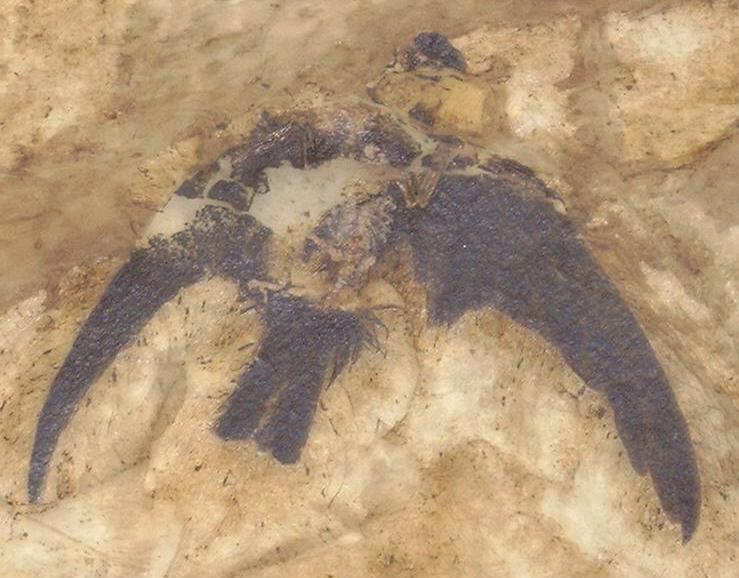
SMF-ME 3576 Senckenbergmuseum Frankfurt a.M. (Donation of M. Keller.)
It flew and hunted insects over the shallow tropical seas and the marshland in the area that is now Hesse in Germany. It died in flight some 49 million years ago, falling into the sea, and was preserved in the oil shales of Grube Messel. This is a photograph of the remains of the oldest-known Swift.
For more information see APUSlist-Nos. 0177 and 2858.
(Apus melba L. 1785 or Tachymarptis melba)
The
Alpine Swift, at 21 cm long,
is larger
than the Common Swift, and has a brown plumage with a white throat patch
and a white belly.
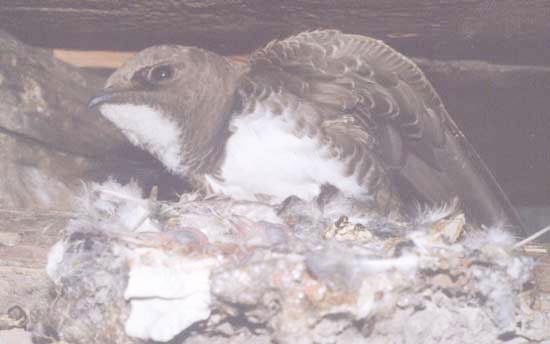
Photo: Anton Antonov
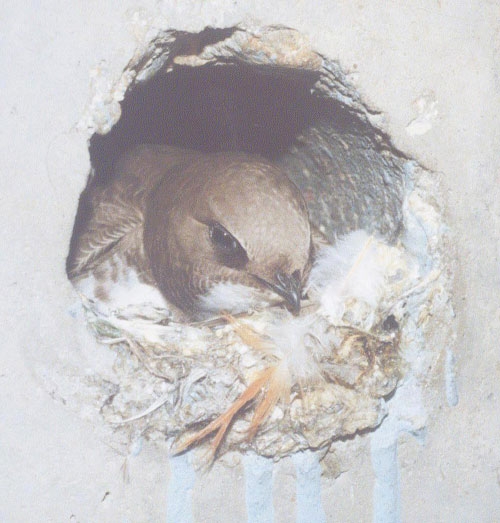
Photo: Anton Antonov
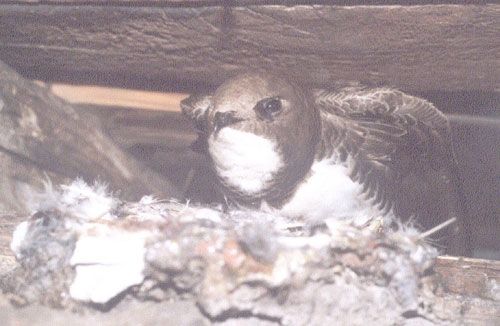
Photo: Anton Antonov
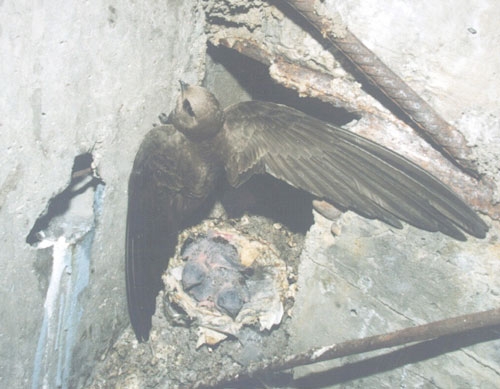
Photo: Anton Antonov
(Apus pallidus Shelley 1870)
The Pallid Swift, at 16-17 cm long, is similar in size to the Common Swift. It has slightly rounder wing tips and a bit shorter tail-forks. The brown plumage is a little lighter. The white patch at the throat is larger. In flight, both species can be very difficult to distinguish from one another. However, their voices are distinct which is a very useful feature allowing easy identification even without the necessity of the birds to be seen.
Photo: Anton
Antonov
Pallid Swift
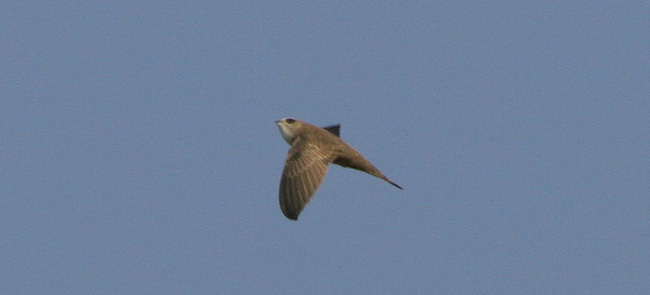
Photo: Charlie Moores.
Pallid Swift
For more photographs of Pallid Swifts see http://www.charliesbirdblog.com/~charlie/DXBJan05/palswift.html
Common Swift
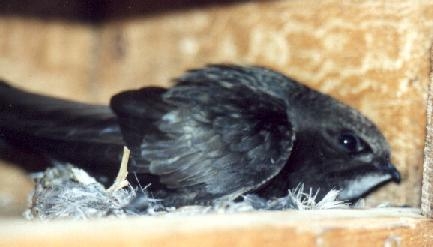
(Apus affinis Gray 1830)
The Little Swifts lives in Africa and South Asia. Its character is the square tail.
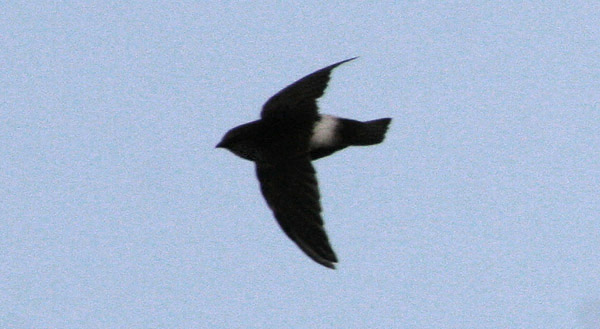
Photo: Charlie Moores
For more photographs of Pallid Swifts see http://www.charliesbirdblog.com/~charlie/NBOlittleswiftsjun05/NBOlittleswiftjun05.
(Chaetura pelagica L. 1758)
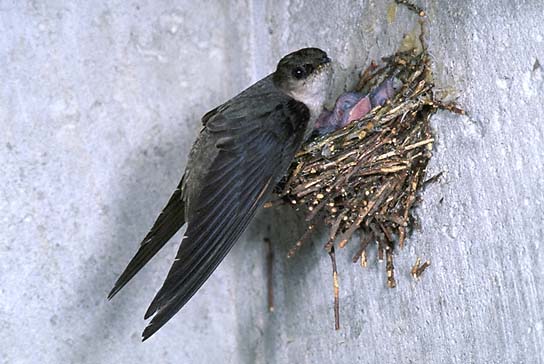
With kind permission of Jeni Howell, Nature Discovery Center
The Chimney Swift lives in America only, and prefers to build its nest in chimneys.
For more information please see Paul D. and Georgean Z. Kyle's great website of the species: www.chimneyswifts.org.
For a webcam please see: http://www.chimneyswifts.org/page2.html
(Cypsiurus parvus Lichtenstein 1823)
Palm Swifts are among the smaller swifts (17 cm in length) with the deepest forked tails among all swifts. Their nests are simple pads of plant floss and feathers glued to the surface of downward hanging palm fronds. Likewise the eggs are glued to the nest thus keeping them from being ejected when winds blow the palm fronds. There are two species, the African Palm Swift (photo) which occurs in subsaharan Africa from Kenya to South Africa and the Asian Palm Swift (Cypsiurus balasiensis) which occurs in southern Asia from India to the Phillipines.
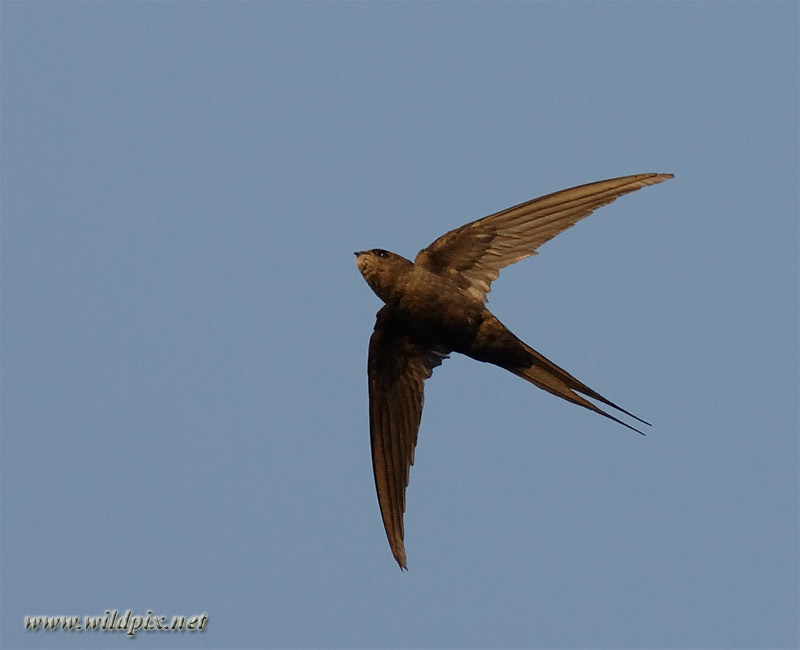
Photo: Martin Best www.wildpix.net
African Palm Swift
For more information about Swift species in East Asia, see
http://asianbird.zo.ntu.edu.tw/bird_range.htm click on Apodiformes
Apus apus, Swifts, Common Swift, gierzwaluw, vencejo comun, sis hachomot, סיס החומות, Црна чиопа, Kara Sağan, Čiopa, ciopa, chyorny strizh, Gierzwaluw (Apus apus), Vencejo común, Черный Стриж, Martinet noir, Rondone comune, rondoni, åtactara, السمامة, Mauersegler, Apuslife
Swift Picture, Swift pictures, Swift photographs, Mauersegler, Mauerseglerfotos, Mauersegler Fotos, foto, Swift photo, bird observation, Mauersegler Beobachtungen, Flugkünste, Vogelflug, flock, flight of birds, Slike ptica, Fotografije ptica, Слике птица, Фотографије птица, Virtuelni magazin, Виртуелни магазин
Pallid Swift, Apus pallidus, Scanish Swift, Aegialornis szarskii, Scaniacypselus szarskii, Alpine Swift, Apus melba, Tachymarptis melba, Little Swift, House Swift, Apus affinis, Chimney Swift, Chaetura pelagica, African Palm Swift, Cypsiurus parvus